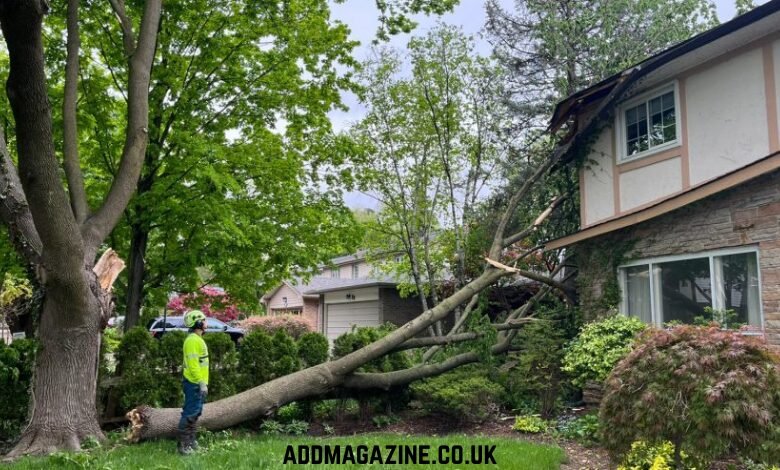The Critical Role of Storm Restoration
Severe weather events can strike unexpectedly, leaving behind a trail of destruction that impacts homes, businesses, and communities. When storms hit, the damage can range from minor inconveniences to catastrophic structural failures. In these moments, storm restoration becomes an essential service to ensure safety, prevent further deterioration, and restore properties to their original condition. This process goes beyond simple repairs; it requires a comprehensive approach that addresses both immediate damage and long-term resilience.
Assessing Damage After a Storm
The importance of storm restoration in Rockland County, NY lies in its ability to mitigate risks associated with water intrusion, wind damage, and structural instability. After a significant storm, property owners are often faced with a myriad of challenges, including roof damage, fallen trees, flooded basements, and compromised electrical systems. Immediate action is critical because delayed repairs can lead to secondary issues such as mold growth, rot, and further structural weakening. Professionals in the field of storm restoration are trained to assess the full scope of damage, prioritize urgent repairs, and implement long-lasting solutions.
Stabilization and Mitigation
A critical component of effective storm restoration is the assessment phase. Trained restoration specialists conduct a thorough inspection to identify visible and hidden damage. This step is essential because not all storm-related problems are immediately apparent. For example, high winds may have loosened roof shingles or damaged flashing, creating vulnerabilities that can lead to leaks during subsequent rainfall. Similarly, electrical systems may have been compromised, posing fire hazards or operational risks. Comprehensive assessment ensures that no aspect of the damage is overlooked and that restoration efforts are both safe and effective.
Once the assessment is complete, the next phase involves stabilization and mitigation. Stabilization focuses on preventing further damage from occurring before full repairs can be completed. This may include temporary boarding of windows, tarping damaged roofs, or pumping out excess water from flooded areas. Mitigation measures are essential for minimizing financial losses and preserving the structural integrity of the property. Without prompt mitigation, even minor storm damage can escalate into major issues that require extensive and costly reconstruction.
Addressing Water Damage
Water damage is one of the most common challenges faced during storm restoration. Storms often bring heavy rainfall, which can quickly infiltrate roofs, windows, and foundations. When water is allowed to sit, it can cause serious structural problems, weaken materials, and create ideal conditions for mold and mildew growth. Professional storm restoration teams employ specialized drying and dehumidification techniques to remove moisture efficiently and thoroughly. These techniques not only restore affected areas but also prevent long-term health hazards associated with mold exposure.
Managing Wind and Debris Damage
In addition to water damage, wind and debris pose significant risks to properties during storms. High-velocity winds can rip off shingles, break windows, and damage siding, leaving buildings vulnerable to the elements. Fallen trees and flying debris can puncture roofs, damage vehicles, and obstruct critical access points. Addressing these hazards is an integral part of storm restoration. Skilled professionals work quickly to clear debris, repair structural elements, and reinforce vulnerable areas to protect the property from additional damage during future weather events.
Electrical and HVAC System Restoration
Another crucial aspect of storm restoration is the restoration of electrical and HVAC systems. Storms can cause power surges, short circuits, and water infiltration, which may compromise electrical wiring and appliances. HVAC systems are particularly susceptible to flooding and wind damage, which can lead to inefficiency or complete failure. Restoration specialists coordinate with licensed electricians and HVAC technicians to ensure that these systems are repaired or replaced safely, restoring normal functionality to the property.
Interior Repairs and Personal Property Restoration
Storm restoration also encompasses the restoration of interior elements such as flooring, walls, ceilings, and personal belongings. Carpets and hardwood floors may become waterlogged, drywall can deteriorate, and furniture or personal items can be damaged beyond use. Comprehensive restoration involves cleaning, repairing, and, when necessary, replacing affected items. Salvaging valuable possessions requires careful handling, specialized equipment, and expert knowledge of cleaning and restoration techniques.
Insurance Coordination and Claim Support
Insurance coordination is another vital component of the storm restoration process. Navigating insurance claims after a storm can be complex and time-consuming. Professional restoration companies often assist property owners in documenting damages, providing detailed reports, and communicating with insurance providers. This guidance ensures that claims are handled efficiently and that property owners receive the financial support needed to complete restoration work.
Prevention and Future Storm Preparedness
Prevention and preparation are also critical elements related to storm restoration. While restoration focuses on repairing damage, proactive measures can reduce the severity of future damage. Reinforcing roofs, installing impact-resistant windows, and maintaining proper drainage systems can all contribute to increased resilience against storms. Property owners who invest in preventive measures often experience less extensive damage, lower repair costs, and faster recovery times.
Psychological and Community Benefits
The psychological impact of storm damage should not be overlooked. Experiencing a storm can be traumatic, especially when significant property loss or disruption occurs. Professional storm restoration services provide not only physical repairs but also reassurance and support. Knowing that experienced specialists are managing the restoration process allows property owners to focus on personal recovery and rebuilding their lives.
Technological Advancements in Storm Restoration
Technology has significantly advanced the field of storm restoration. Modern equipment, such as thermal imaging cameras, moisture meters, and high-capacity water extraction units, allows specialists to detect hidden damage and execute repairs with precision. These technological tools enhance efficiency, reduce labor costs, and ensure that restoration work meets high standards of quality and safety. Furthermore, advanced drying and dehumidification systems accelerate the restoration process, allowing properties to be restored quickly and effectively.
Environmentally Conscious Storm Restoration
Environmental considerations are increasingly important in storm restoration. Many restoration companies now incorporate eco-friendly practices, such as recycling debris, using low-impact cleaning agents, and implementing sustainable materials for repairs. This approach benefits both the environment and the community while maintaining high restoration standards.
Conclusion
In conclusion, storm restoration in Rockland County, NY is a critical service that addresses the immediate and long-term effects of severe weather events on properties. By combining assessment, mitigation, repair, and preventive measures, restoration specialists ensure that homes and businesses are not only repaired but also fortified against future storms. The comprehensive nature of storm restoration safeguards structural integrity, protects valuable assets, and promotes safety for occupants. Investing in professional storm restoration services is an essential step toward resilience, security, and peace of mind in the face of unpredictable weather events.




